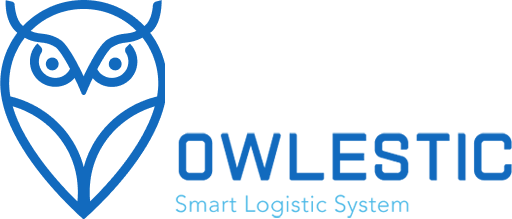How Does Owlestic Optimize Distribution Routes Based on Traffic Data?
12 Jan 2025Have you ever faced delays or inefficiencies in your delivery routes due to unpredictable traffic conditions? In today’s fast-paced logistics environment, optimizing distribution routes is crucial for improving efficiency, reducing costs, and ensuring timely deliveries. With traffic congestion, road closures, and other unpredictable factors constantly affecting the route planning process, how can companies ensure their distribution teams are always on the fastest, most efficient paths? The answer lies in Owlestic advanced fleet management systems like , which uses real-time traffic data, GPS tracking, and mission management software to revolutionize route optimization.
Real-Time Traffic Data Integration for Smarter Routing
One of the most significant advantages of using Owlestic Fleet Management Software is its ability to integrate real-time traffic data directly into its route optimization algorithm. Traditional route planning systems often rely on static maps and general assumptions about traffic conditions. In contrast, Owlestic’s system uses live traffic information to dynamically adjust routes, ensuring that distribution teams avoid congested areas, accidents, or roadwork delays.
For example, imagine a delivery truck is scheduled to deliver goods to multiple retail stores across a city. Without a real-time data feed, the route might take the driver through a heavily congested area, causing delays and increased fuel consumption. However, Owlestic’s integration with real-time traffic data ensures that the software constantly updates the route based on current traffic conditions. If a traffic jam or roadblock occurs, the system will automatically reroute the driver to a faster, alternative path, keeping the schedule intact and reducing unnecessary delays.
Accurate GPS Tracking for Enhanced Route Management
Owlestic’s accurate GPS tracking feature ensures that fleet managers can monitor the exact location of each vehicle in real-time. This enables businesses to track the progress of deliveries more efficiently and make timely adjustments if any issues arise during the route.
Consider a scenario where a truck breaks down on its way to a delivery location. With Owlestic’s GPS tracking, the fleet manager can quickly pinpoint the truck’s location and dispatch the nearest available vehicle to continue the delivery. Additionally, the system provides historical data on vehicle movements, allowing fleet managers to analyze past routes and traffic patterns to identify areas for future optimization.
This feature is particularly valuable for mission management, where precision and timeliness are critical. By utilizing accurate GPS tracking, Owlestic ensures that every aspect of the mission is carried out smoothly, minimizing downtime and improving overall fleet efficiency.
Optimizing Routes with Owlestic’s Mission and Distribution Management Software
Owlestic offers robust mission management and distribution management software that works hand-in-hand with its traffic data and GPS features. These tools allow distribution companies to plan, assign, and track delivery missions in a more streamlined manner.
Mission Management:
Owlestic’s mission management system ensures that each delivery is planned with precision. The software considers factors such as delivery deadlines, optimal routes, and real-time traffic data to assign the best routes to each vehicle. For example, if one delivery mission is on a tight schedule, Owlestic will prioritize the fastest route with minimal traffic interruptions, while less urgent deliveries can take alternative, less congested routes.
Distribution Management:
The distribution management system is designed to optimize the entire delivery process. It not only tracks each vehicle but also ensures that each distribution mission is completed in the most efficient way possible. With the combination of real-time traffic data, GPS tracking, and advanced route planning, Owlestic ensures that every delivery is completed on time, with minimal fuel consumption and cost.
For example, if a company has multiple delivery trucks operating in a city, Owlestic’s software can calculate the best route for each vehicle based on real-time data. If one vehicle is delayed due to traffic, the software automatically reroutes other vehicles to ensure all deliveries are completed on time. This level of optimization results in better service delivery, reduced costs, and higher customer satisfaction.
Examples of Owlestic’s Impact in Real-World Distribution
A food distribution company using Owlestic’s fleet management software can significantly reduce delivery time by leveraging real-time traffic data. For instance, the company delivers fresh produce to various retailers, and their vehicles are often delayed by unpredictable traffic conditions. With Owlestic’s system, the fleet manager can track each truck’s progress in real-time and make quick adjustments to the routes as traffic conditions change, ensuring that all deliveries arrive on time and maintain the quality of goods.
Another example is a retail chain that relies on a fleet of trucks to deliver products to stores across the city. By using Owlestic’s distribution management system, the company can schedule deliveries based on optimal routes and real-time traffic, reducing fuel consumption and operational costs. The system also helps the fleet manager ensure that the drivers stay within the most efficient delivery windows, enhancing productivity and reducing overtime.
Conclusion: The Future of Distribution Route Optimization
In a world where logistics operations are becoming increasingly complex, Owlestic Fleet Management Software offers companies the tools they need to stay ahead of the curve. By integrating real-time traffic data, GPS tracking, and advanced mission management features, Owlestic enables companies to optimize their distribution routes in a way that traditional systems cannot. With the ability to adapt to changing traffic conditions, Owlestic not only improves operational efficiency but also reduces costs, ensures timely deliveries, and enhances customer satisfaction.
